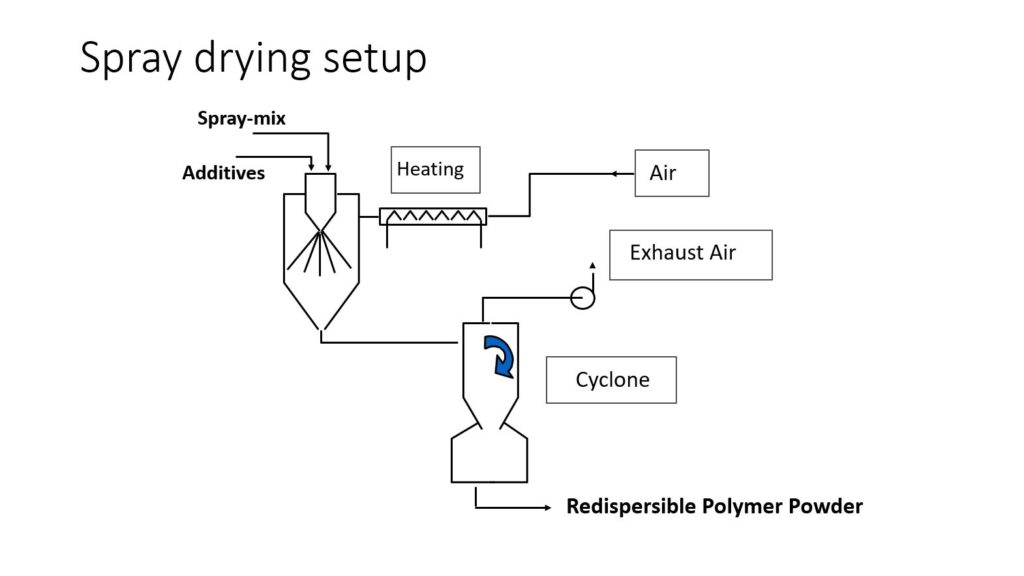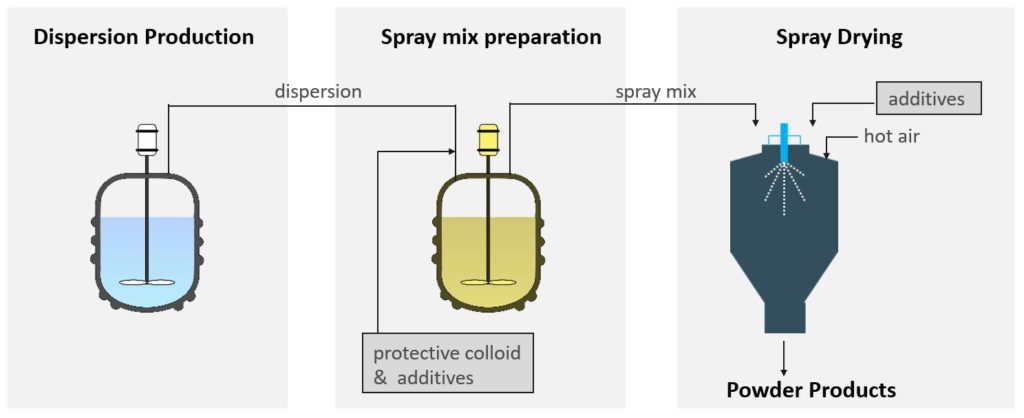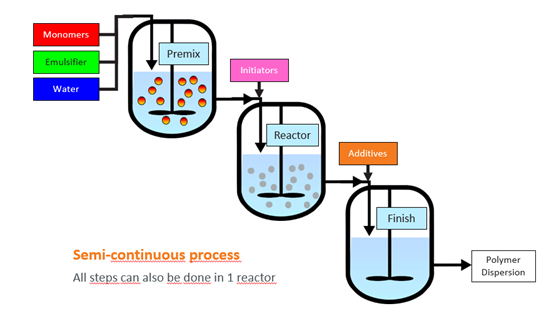Polymer dispersions and lattices
What are polymer dispersions, lattices and redispersible powders made thereof?
Polymer dispersions are mixtures as defined under Article 3(2) of the REACH Regulation EC/1907/2006 , consisting mainly of water and high molecular weight polymer droplets. They can be homo- or co-polymers on a variety of monomers based on e.g. vinyl acetate, ethylene, (meth)acrylic acid and -esters, styrene, butadiene, vinyl versatate and other monomers.
Based on polymer weight and chemical nature, the polymer droplets can be solid or highly viscous. The particle size of such polymer droplets can widely vary.
The polymer droplets are dispersed and stabilised in water and regarded as embedded in the liquid matrix. They cannot be isolated as discrete droplets by simple separation techniques and do not exist without their waterborne environment. Polymer dispersions are stable under normal or advised storage, transport and handling conditions. By evaporation of the water a separation between the aqueous and the polymeric phase is enacted and leads to film formation via coalescence of the polymer droplets.
Based on polymer weight and chemical nature, the polymer droplets can be solid or highly viscous. The particle size of such polymer droplets can widely vary.
The polymer droplets are dispersed and stabilised in water and regarded as embedded in the liquid matrix. They cannot be isolated as discrete droplets by simple separation techniques and do not exist without their waterborne environment. Polymer dispersions are stable under normal or advised storage, transport and handling conditions. By evaporation of the water a separation between the aqueous and the polymeric phase is enacted and leads to film formation via coalescence of the polymer droplets.
The polymer droplets are formed by a polymerisation reaction in liquid phase or by special emulsifying techniques that naturally generate a size distribution.
Polymer dispersions are used as binders in many waterborne applications, e.g., adhesives, coatings and paints, carpets, nonwoven, paper and paperboard coatings, plasters and textile finishing agents.
Polymer dispersions are used as binders in many waterborne applications, e.g., adhesives, coatings and paints, carpets, nonwoven, paper and paperboard coatings, plasters and textile finishing agents.
Polymer dispersion technology has been used safely and successfully for more than 50 years and has contributed to a significant reduction in the release of organic solvents into the environment. Common to all dispersions is a film forming process during application.
Free-flowing redispersible polymer powders are produced by spray-drying of aqueous polymer dispersions. They act as organic binders and are mostly used in combination with cement, gypsum and hydrated lime and enhance critical properties of modern dry-mix mortars such as adhesion, cohesion, flexibility and workability. Moreover, redispersible polymer powders allow manufacturers to formulate finished products with low volatile organic compound (VOC) emissions in accordance with demanding governmental regulations as well as requirements of internationally recognised environmental certifications and labels.

Polymer dispersions production process
Polymer dispersions and lattices are produced in an aqueous environment. The monomers, emulsifiers and a part of the water can be premixed, but can be metered into the reactor directly as well. By the decomposition of the initiator the polymerisation is started. After the polymerisation, the polymer dispersion can be finished with additives to ensure the wanted properties. The process can be done in both an semi-continuous as in (semi-) batch process.
Below a schematic overview of the production process for polymer dispersions and lattices.
Below a schematic overview of the production process for polymer dispersions and lattices.

Redispersible polymer powders production process
Redispersible polymer powders made from polymer dispersion and/or lattices are used in processes where the fluid systems cannot be used. The drying of the polymer dispersions and/or lattices is done by spray drying. The benefit of this system is that after redispersing the original particle size of the polymer dispersions is retained.
Below two ways of spray drying are shown.
